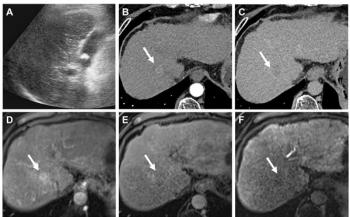
Clinical support grows steadily for breast MRI
Breast MRI suffered from a serious image problem during the second half of the 1990s. Because of its limited specificity and high cost, the technique was written off by many specialists, but clinical acceptance of it has increased over the past few years. It is now widely recognized as a valuable adjunct to mammography and ultrasound.
Breast MRI suffered from a serious image problem during the second half of the 1990s. Because of its limited specificity and high cost, the technique was written off by many specialists, but clinical acceptance of it has increased over the past few years. It is now widely recognized as a valuable adjunct to mammography and ultrasound.
High-resolution images can be acquired routinely with 1.5T and 3T scanners in less than 40 minutes. MRI breast biopsy devices are commercially available, and the protocol has been standardized. Some hospitals still image one breast per examination, which is time-consuming and inefficient, but new hardware and software allow both breasts to be examined at the same session.
Breast MR still must be used selectively, as Dr. Ingvar Andersson, associate professor of radiology in Malmo, Sweden, told delegates at the 9th Asian Oceanian Congress of Radiology in Singapore. He uses breast MRI only for selected patients: those with suspicious physical findings and dense breasts that are difficult to interpret on mammography, ultrasound, and needle biopsy; those with one focus of breast cancer who are candidates for conservative surgery but have difficult-to-interpret mammograms and ultrasound scans; those with post-treatment changes after conservative surgery and irradiation that cannot be evaluated with established techniques; those with silicone implants; and those with metastatic disease in the axilla and negative mammography and ultrasonography.
"Routine follow-up of patients who have been treated for breast cancer and monitoring of the response to therapy, in particular chemotherapy, are relative indications for MRI, but they are not yet fully established," he said. "We do not recommend MRI for patients with dense mammograms without suspicion of malignancy or for patients with 'cancerophobia' but without suspicion of malignancy on conventional methods."
As an introduction to the topic, Dr. Fong Tsai's article this issue is recommended reading. The author describes his positive experiences with a dedicated system that might be of interest to other readers. Such systems have their skeptics, but they may be worth a second look.
In our next Asia Pacific edition, we will be publishing a follow-up article from Hong Kong about high-field breast MRI. Very high spatial and temporal resolution can be obtained by partnering 3T with parallel imaging techniques, and the high spatial resolution enhances the morphologic features of lesions and increases diagnostic confidence. Further improvements in sensitivity and specificity are expected as radiologists gain more experience in working with 3T.
Newsletter
Stay at the forefront of radiology with the Diagnostic Imaging newsletter, delivering the latest news, clinical insights, and imaging advancements for today’s radiologists.




























